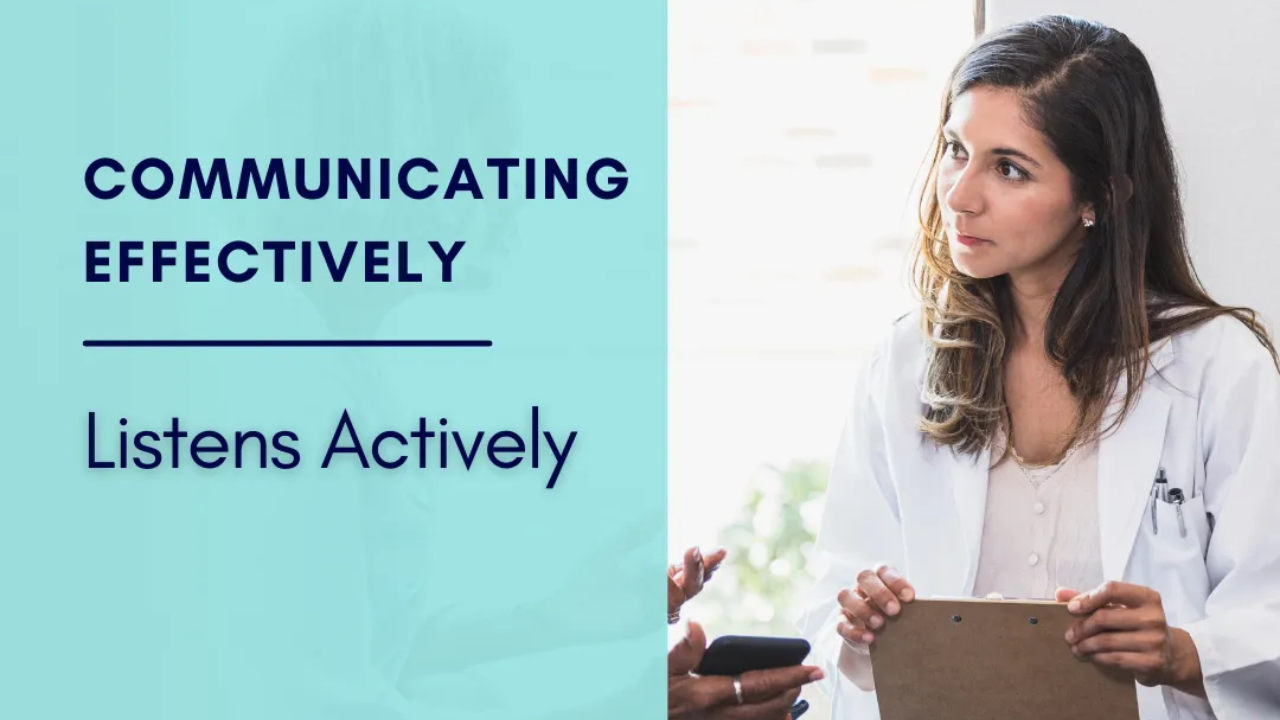Listens Actively - Communicating Effectively
Feb 06, 2025
The International Coaching Federation (ICF) Core Competencies outline skills and approaches used by professional coaches. These principles are explicitly stated in the context of coaching and can be used with colleagues, patients, and ourselves in the hospital and beyond. In this blog series, we look at how the ICF Core Competencies apply to physicians in the areas of personal growth, peer support, and patient care.
The sixth Core Competency domain we will address in this blog series is critically important on the path to success: Listens Actively
This Core Competency is defined by six skills or approaches.
Listening actively is more than just hearing words—it’s about fully understanding and engaging with the speaker on multiple levels. This core competency builds trust, promotes collaboration, and enables transformational conversations in the fast-paced, high-stakes environment of healthcare.
What Is Active Listening?
Active listening involves paying attention not only to what is being said but also to what is unsaid—the emotions, intentions, and nuances underlying the words. As defined by the ICF, active listening encompasses six key skills:
1. Considers the client’s context, identity, environment, experiences, values and beliefs to enhance understanding of what the client is communicating
Understanding context is essential when interacting with patients and peers alike. For physicians, this means grasping the full scope of a person’s background and circumstances. When working with patients, it involves acknowledging their unique cultural, social, and personal contexts to provide care that feels personalized and empathetic. With peers, it means considering how their professional and personal experiences shape their challenges and goals.
2. Reflects or summarizes what the client communicated to ensure clarity and understanding
Rephrasing or summarizing what someone says shows you are actively engaged in the conversation. This is much more beneficial than simply nodding along while the other person is talking. For example, repeating back a patient’s concerns in your own words ensures mutual understanding and demonstrates your commitment to their care. The same is true when communicating with colleagues or peers.
3. Recognizes and inquires when there is more to what the client is communicating
In the medical field, what’s unspoken often matters as much as what’s said. A colleague’s hesitance in a meeting or a patient’s vague description of their symptoms might indicate deeper concerns. By asking thoughtful follow up questions, you can uncover the underlying issues and address them effectively. It’s important to pay close attention to the person you’re speaking with (be it a patient or peer) to look out for any signs that there may be something going unsaid.
4. Notices, acknowledges and explores the client’s emotions, energy shifts, non-verbal cues or other behaviors
Physicians often encounter patients and peers experiencing intense emotions - it’s a part of the job we all sign up for. These emotions sometimes go unspoken and may materialize non -verbally. Recognizing shifts in tone, posture, or energy—and responding with curiosity rather than judgment—can help you connect on a deeper level.
5. Integrates the client’s words, tone of voice and body language to determine the full meaning of what is being communicated
Communication is multifaceted. It’s not just about what is literally being spoken aloud. Rather, it’s a combination of factors like words, tone, body language, and more. By recognizing and analyzing verbal and non-verbal cues during a conversation, you gain a clearer picture of the speaker’s message, ensuring that you can respond in an appropriate and empathetic manner.
6. Notices trends in the client’s behaviors and emotions across sessions to discern themes and patterns
Over time, observing recurring behaviors or emotional patterns can help identify root causes of issues. This doesn’t happen during the course of a single conversation, but over recurring sessions that may span months or years. In coaching, this skill uncovers opportunities for growth. In medicine, it can illuminate health trends or professional challenges.
In summary, “listens actively” is about grasping the full meaning of what is being said and signaling your understanding to the client. By employing these core competencies - noticing non-verbal cues, reflecting the speaker’s message back to them, and analyzing trends for deeper understanding - you can improve your ability to communicate with patients and peers alike.
CONNECT WITH US!
Subscribe for the latest coaching news, resources, and Physician Coach Training updates.
This is a confidential list. We will never share your information, for any reason.


